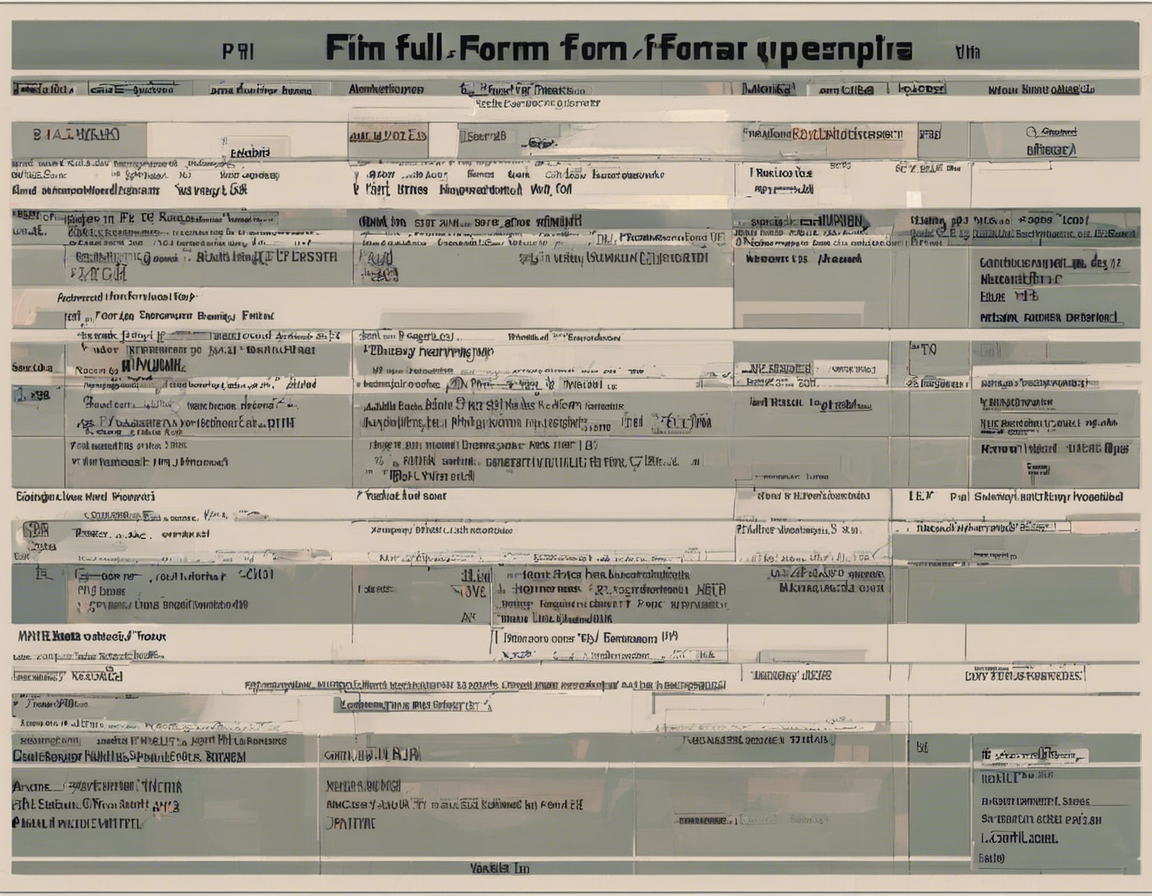When it comes to project finance, PFI stands for Private Finance Initiative. This specific type of funding model involves a partnership between a public sector authority and a private sector company. The goal of a PFI is to provide funding for public infrastructure projects without the need for the public sector to incur the full upfront costs.
Overview of PFI
How Does PFI Work?
In a typical PFI arrangement, a private sector consortium is contracted to finance, design, build, operate, and maintain a public infrastructure project. This could include projects like hospitals, schools, transportation systems, or other public buildings. The private sector partner will often secure financing from banks or investors to fund the project.
Key Parties Involved in PFI
Public Sector Authority: This could be a government department or a local council that requires a new infrastructure project but lacks the necessary funds to finance it upfront.
Private Sector Consortium: This group typically consists of construction companies, facilities management firms, and financial institutions that work together to deliver the infrastructure project.
Lenders/Investors: Banks, financial institutions, and other investors provide the necessary capital to fund the project. They are repaid over the long term through payments from the public sector authority.
Payment Mechanism in PFI
One of the distinguishing features of PFI is the payment mechanism. Instead of the public sector paying for the construction costs upfront, the private sector consortium funds the project and is then repaid over an extended period (often 25-30 years) through regular payments from the public sector authority. These payments typically cover construction, operation, and maintenance costs.
Risk Distribution: In a PFI project, risk is often shared between the public and private sectors. The private sector assumes some of the construction and operational risks, while the public sector may bear the risk of demand fluctuations or changes in government policy.
Advantages of PFI
Efficient Project Delivery
PFI projects are often delivered on time and within budget due to the private sector’s expertise in project management and risk mitigation. The incentive for the private sector consortium to deliver the project efficiently is tied to their long-term payment structure.
Innovative Design and Technology
Private sector involvement can bring innovative design solutions and the latest technologies to public infrastructure projects, enhancing quality and efficiency.
Transfer of Operational Risk
By outsourcing the operation and maintenance of infrastructure to the private sector, the public authority can transfer the operational risk to the private consortium, ensuring that the assets are well-maintained throughout their lifecycle.
Budget Certainty
PFI projects provide budget certainty for the public sector authority, as the long-term payment structure allows for better financial planning and management.
Criticisms of PFI
Cost Overruns
Critics of PFI argue that the long-term costs of PFI projects can be higher than if the public sector financed the project directly. This is due to the additional costs incurred through private financing, profit margins for the private sector, and higher borrowing costs.
Lack of Transparency
Some detractors of PFI point to issues of transparency and accountability, as the complex nature of PFI contracts can make it difficult for the public sector and taxpayers to fully understand the true costs and risks involved.
Risk Transfer
While the transfer of risk is often seen as a benefit of PFI, critics argue that not all risks are effectively transferred to the private sector. In some cases, the public sector may still bear significant risks, such as demand variability or changes in government policy.
Frequently Asked Questions (FAQs)
1. What types of projects are suitable for PFI funding?
Answer: PFI funding is commonly used for large-scale infrastructure projects such as hospitals, schools, roads, and prisons. These projects typically have long-term operational and maintenance requirements that make them suitable for private sector involvement.
2. How are payments structured in a PFI arrangement?
Answer: Payments in a PFI project are typically structured as a series of availability payments, where the public sector authority pays the private consortium based on the availability and performance of the infrastructure asset.
3. What happens at the end of a PFI contract?
Answer: At the end of a PFI contract, the ownership of the infrastructure asset may transfer to the public sector authority, or it may remain in the hands of the private sector consortium, depending on the terms of the agreement.
4. Are there alternatives to PFI for funding public infrastructure projects?
Answer: Yes, there are alternative funding models such as Public-Private Partnerships (PPPs), government borrowing, and traditional procurement methods that can be used to finance public infrastructure projects.
5. What role does the government play in overseeing PFI projects?
Answer: The government is responsible for procuring and monitoring PFI projects to ensure value for money and compliance with regulations. Government agencies may also provide support and guidance to public sector authorities engaging in PFI partnerships.
6. How does PFI impact the quality of public services?
Answer: PFI projects have the potential to improve the quality of public services through the introduction of innovative design, technology, and efficient operational practices brought by the private sector consortium.
7. Can PFI projects be terminated early?
Answer: Early termination of PFI contracts can be complex and may result in significant costs and legal implications. Public sector authorities considering early termination should carefully assess the risks and consult legal and financial advisors.
8. How are risks allocated between the public and private sectors in a PFI arrangement?
Answer: Risks in a PFI project are typically allocated based on each party’s ability to manage and mitigate specific risks. The contract should clearly outline the responsibilities and liabilities of each party regarding different types of risks.
9. Are PFI projects subject to public procurement regulations?
Answer: Yes, PFI projects are typically subject to public procurement regulations to ensure transparency, competition, and compliance with legal requirements. Public sector authorities must follow established procurement processes when engaging in PFI partnerships.
10. What are some successful examples of PFI projects?
Answer: Successful PFI projects have been implemented worldwide, with examples including the Dartford Crossing in the UK, the M6 Toll Road, and the Royal Infirmary of Edinburgh. These projects have demonstrated the potential benefits of private sector involvement in delivering public infrastructure.



